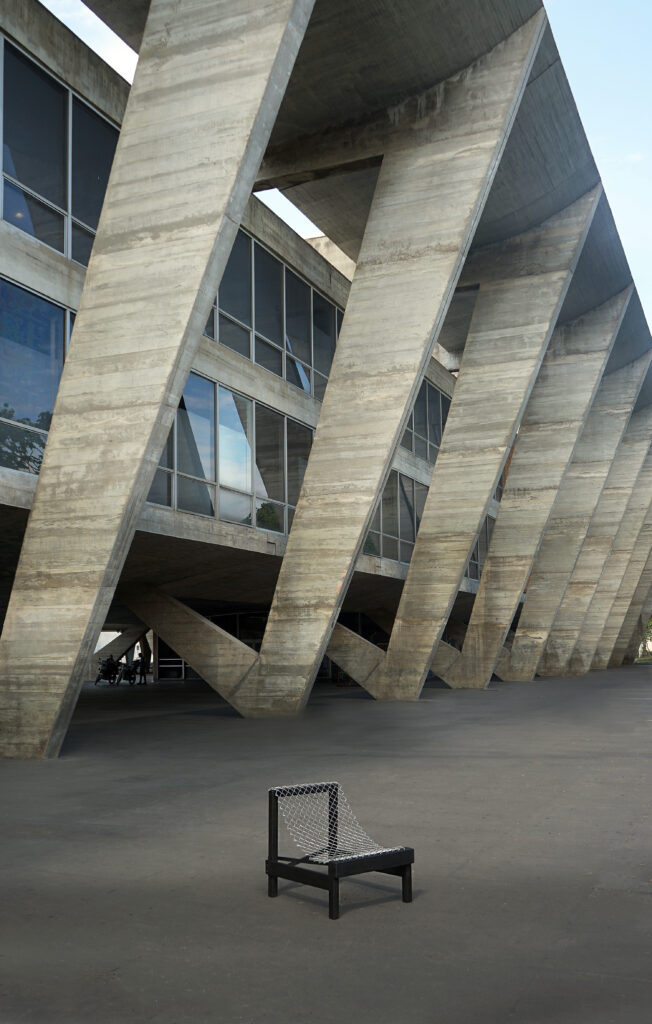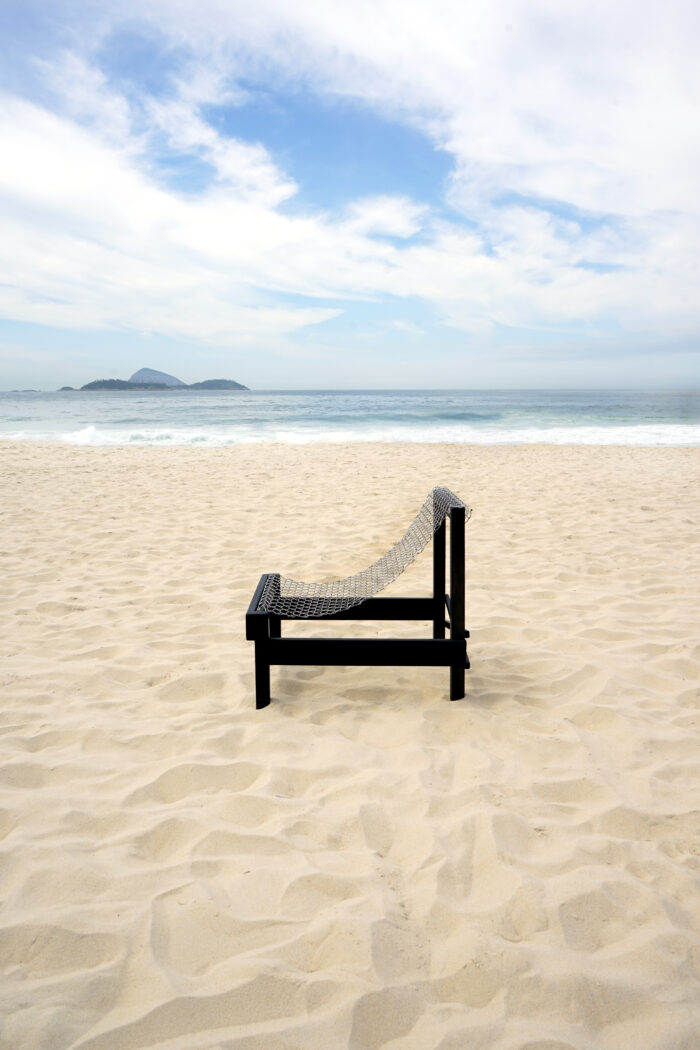The research of Cross Cultural Chairs in Brazil, was conducted in Rio de Janeiro where Matteo Guarnaccia together with designer Brunno Jahara and designer Dimitrih Correa. This was the first of 8 different chairs made in the most populous countries of the World, curated by Matteo Guarnaccia, he states :
‘One of the first things I felt in Brazil was an impact full of contrasts, between forest and concrete, rich and poor, happiness and insecurity.’
The Brazilian population reached over 210 million people, being the 5th most populated country in the world, is a jam of different ethnicity and races. The Brazilian Institute of Geography and Statistics (IBGE) divide it into 6 different categories, but 2 of them are predominant, “Brancos” (white) 47.73% and “Pardos” (Multiracial) 43.13% which include many different subcategories.

The intention of the chair is to express this contrast really present in the beautiful Brazilian culture. Distinctions and disparity are part of the daily life of the city, just consider the structure of the city of Rio de Janeiro, the north zone seems like another city compared with the south zone, changing in architecture and dynamics, in opposition with the more western and disciplined south zone.
In contrast between wood and metal, the wood structure made out of black tinted “freijò” wood, reminds the classic Brazilian modernist aesthetic, with a cross in the back that pays a tribute to the “barracas”, a wooden structure used widely around the city by ambulant sellers, representing people of Rio, so called “Cariocas”, in a relaxed and improvised manner.

The metal net represents an element of division, selection and separation. Evoking feelings security, it also brings up a military aesthetic, creating awareness on the political and military direction that recently Brazilian government is taking to the extremely stupid right. These polarities are some how deepened in the project, and makes one think not just of tropical landscapes, but also of contemporary culture and Brazil’s situation at that time.
The chair was exhibited at MAM (Museum of Modern Art) in Rio during a discussion event to promote the project and Museo Disseny Barcelona, during The Milan Design Week at BASE Milano and at the Utrecht Museum. At the end of the project, a book was published to celebrate the journey in Brazil, Mexico, Japan, Indonesia, China, India, Russia and Nigeria.


